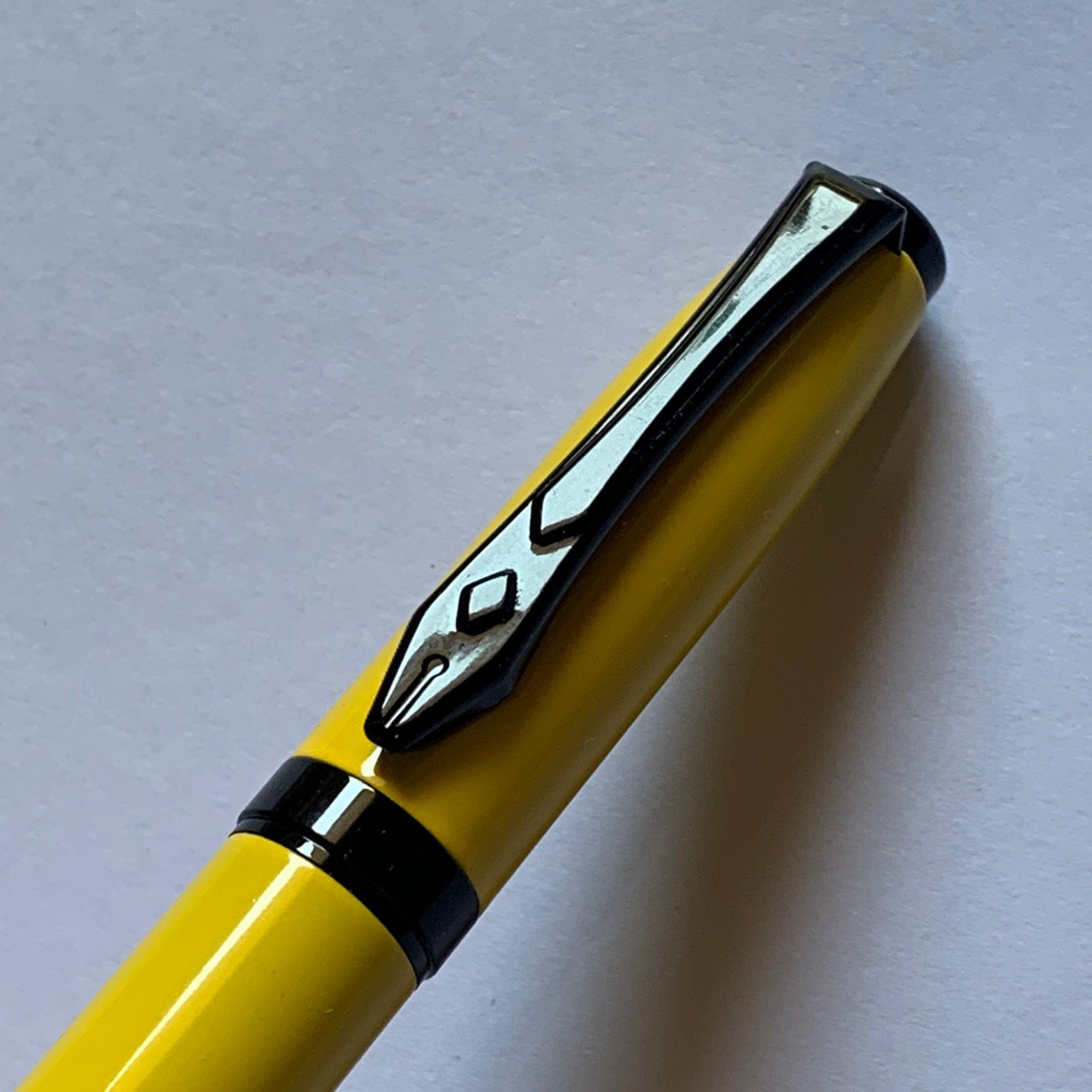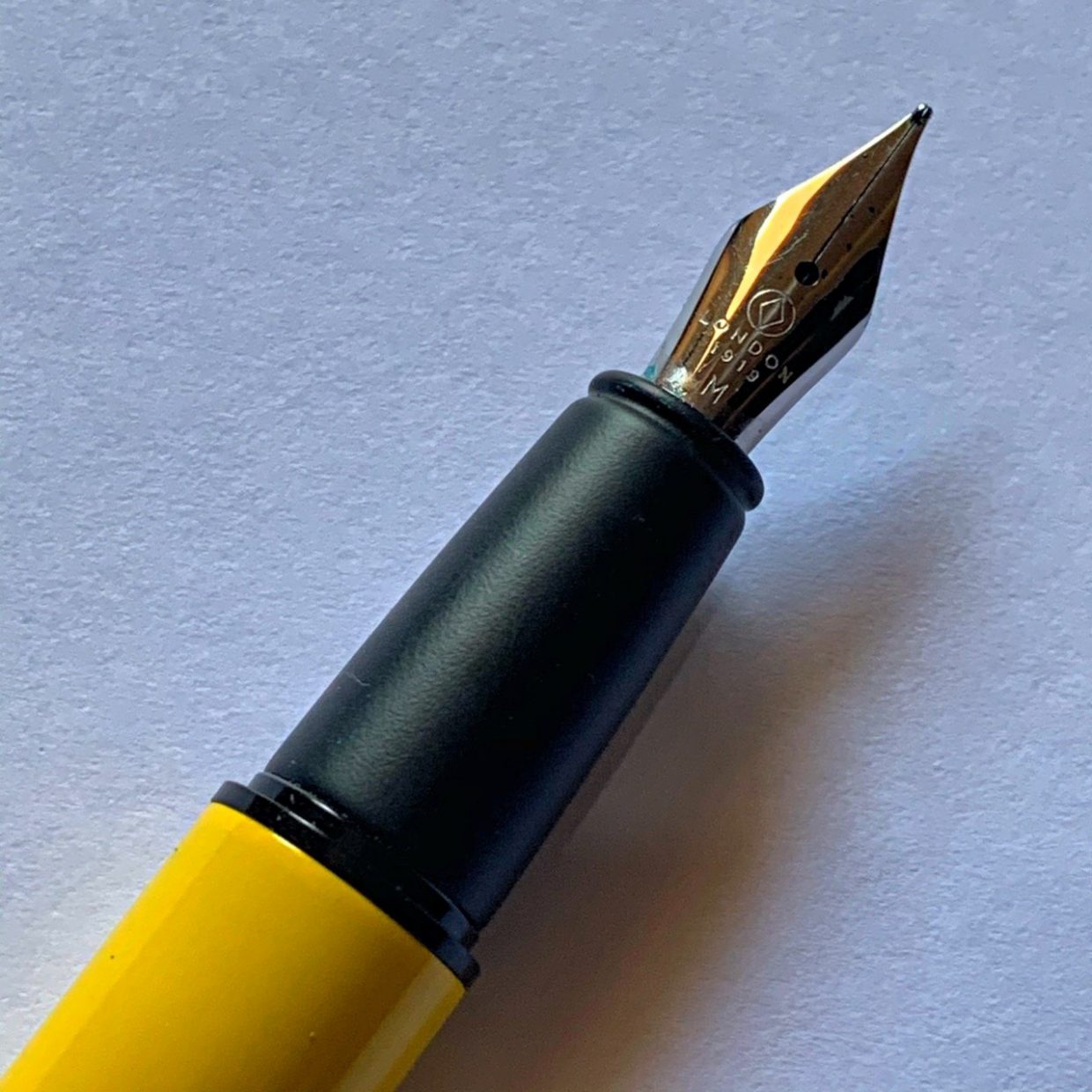Platignum started as the Mentmore Manufacturing Company in 1919, at its first premises in Mentmore Terrace, London. The company’s first product was a self-filling fountain pen with a gold plated nib. In 1925, the first replacement nib unit was developed. Mentmore planned to register the name Platinum, but it could have contravened the laws of product description. So a company was registered in the name of the “Platignum Pen Company”, and products carrying the brand name Platignum were introduced.
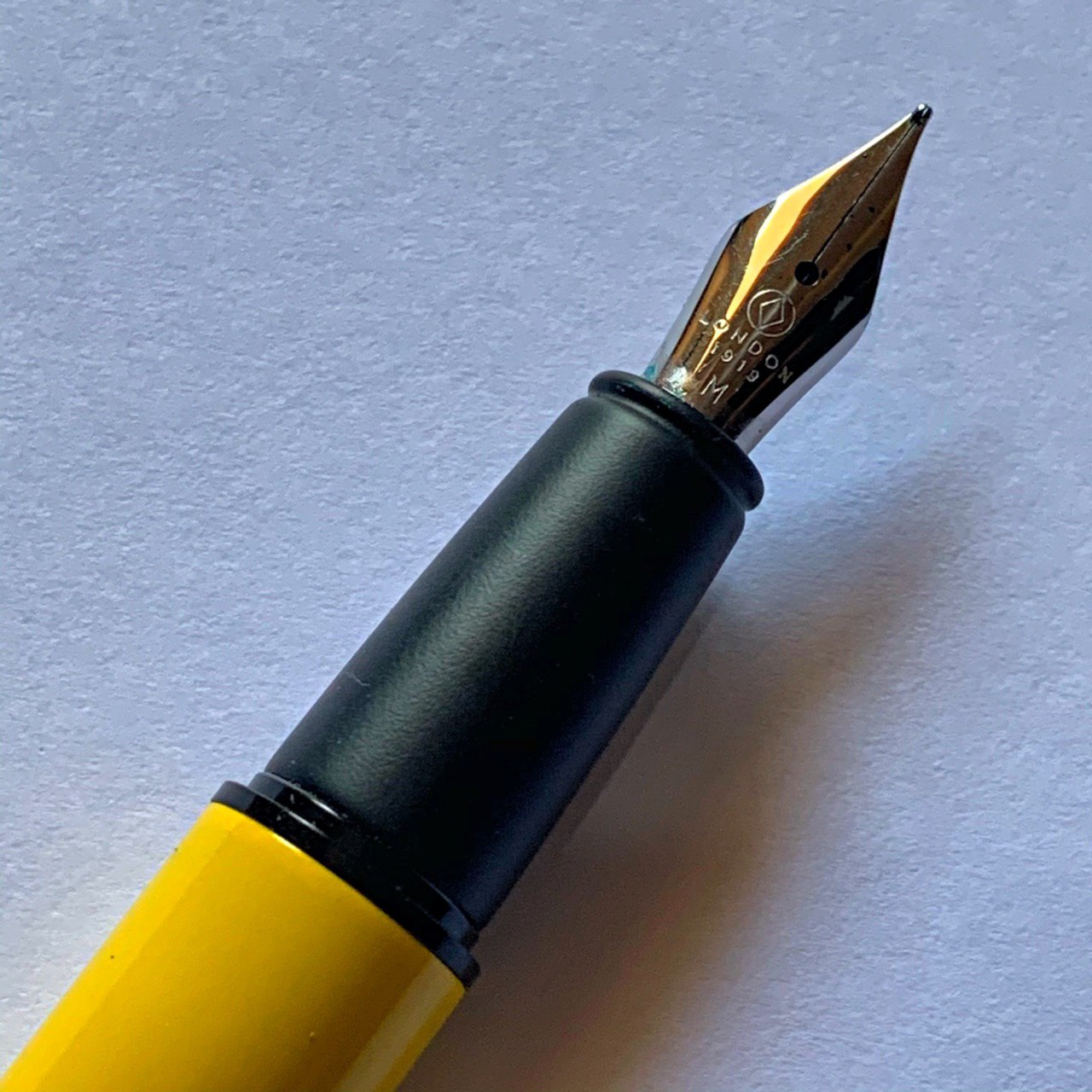
In World War II, the British War Office entrusted the Platignum to make special spy pens containing maps and compasses. A deadlier model was also produced for use by secret agents — it contained a poisoned dart able to kill at a distance of ±8m.
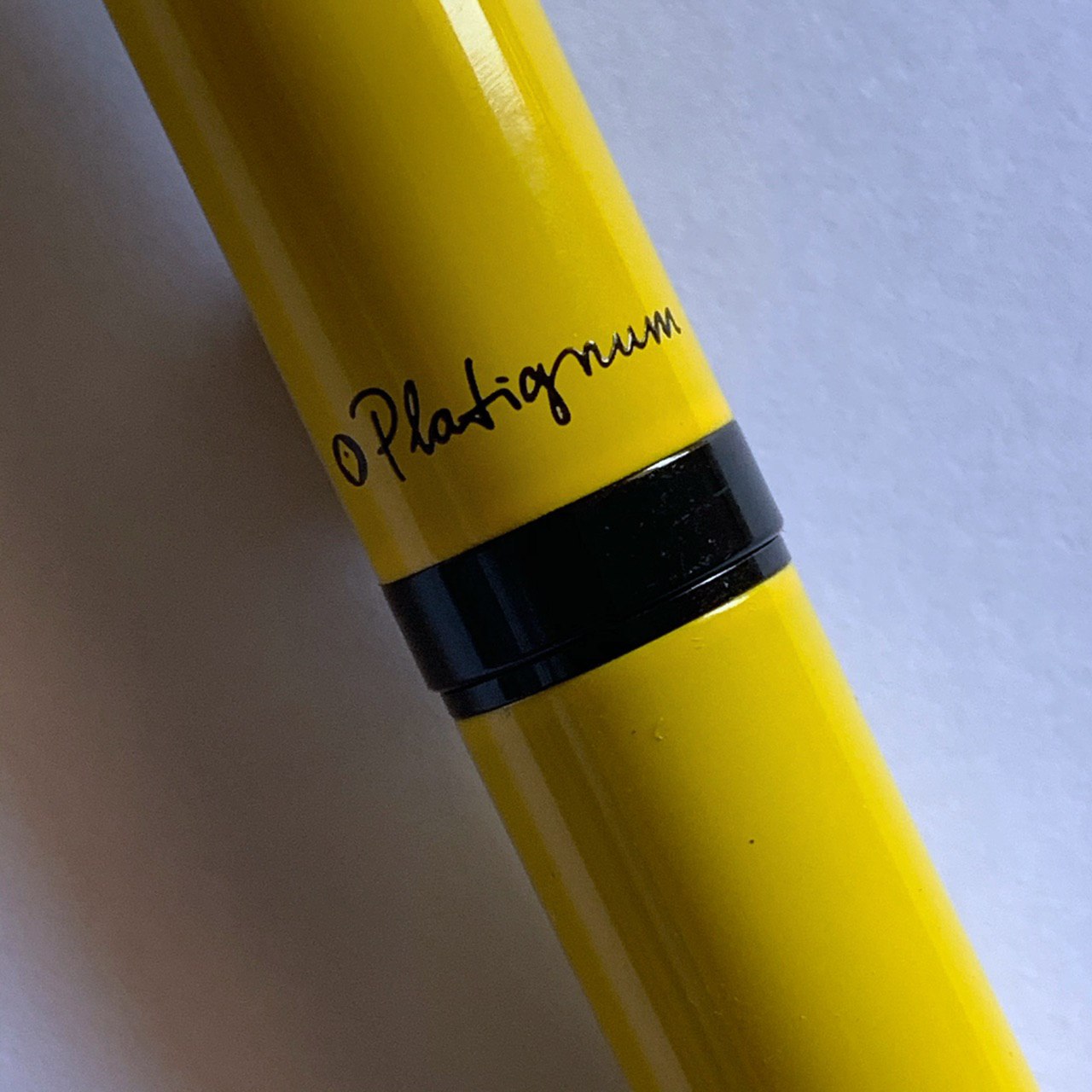
Platignum continues the production after World War II to 1997. It stopped the production in 1997, but then having a relaunch in 2007.
The pen I display here is a Platignum Studio. It has a metal body (made of aluminium) with medium nib made of stainless steel. The nib is engraved with a sign “London 1919” —
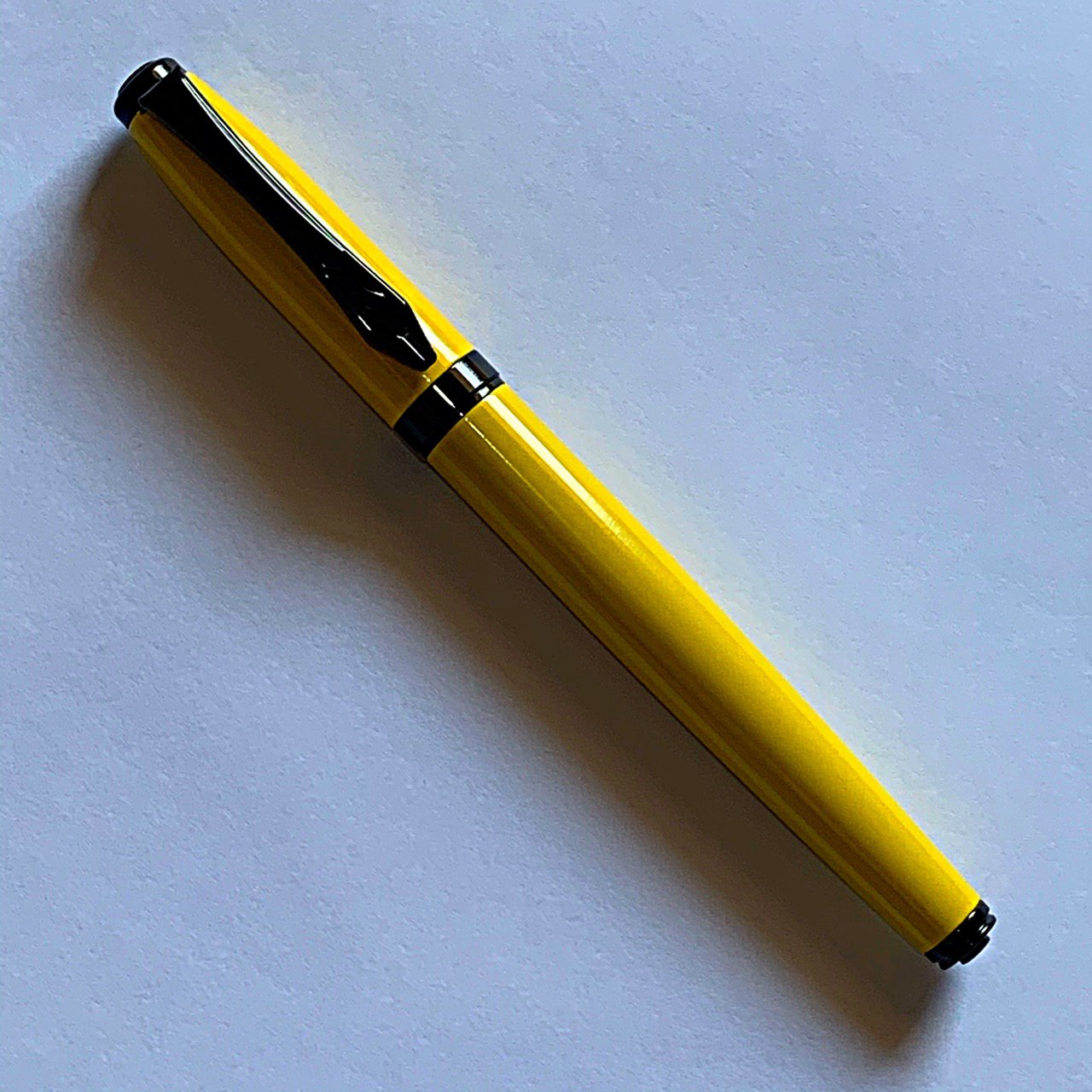
Weight: 29g
Length (capped): 135mm
Length (uncapped): 121mm
Body Material: Aluminium
Nib Material: Stainless steel
